斯里兰卡料理核心的素食菜肴
43 分钟 阅读 探索斯里兰卡充满活力的素食核心——香料扁豆、椰香咖喱、桑博尔(sambol)以及庙宇饮食——根植于家庭厨房与传统传承,附带实用建议、风味与文化背景,帮助心怀敬意、无肉进食的盛宴。 十月 09, 2025 06:07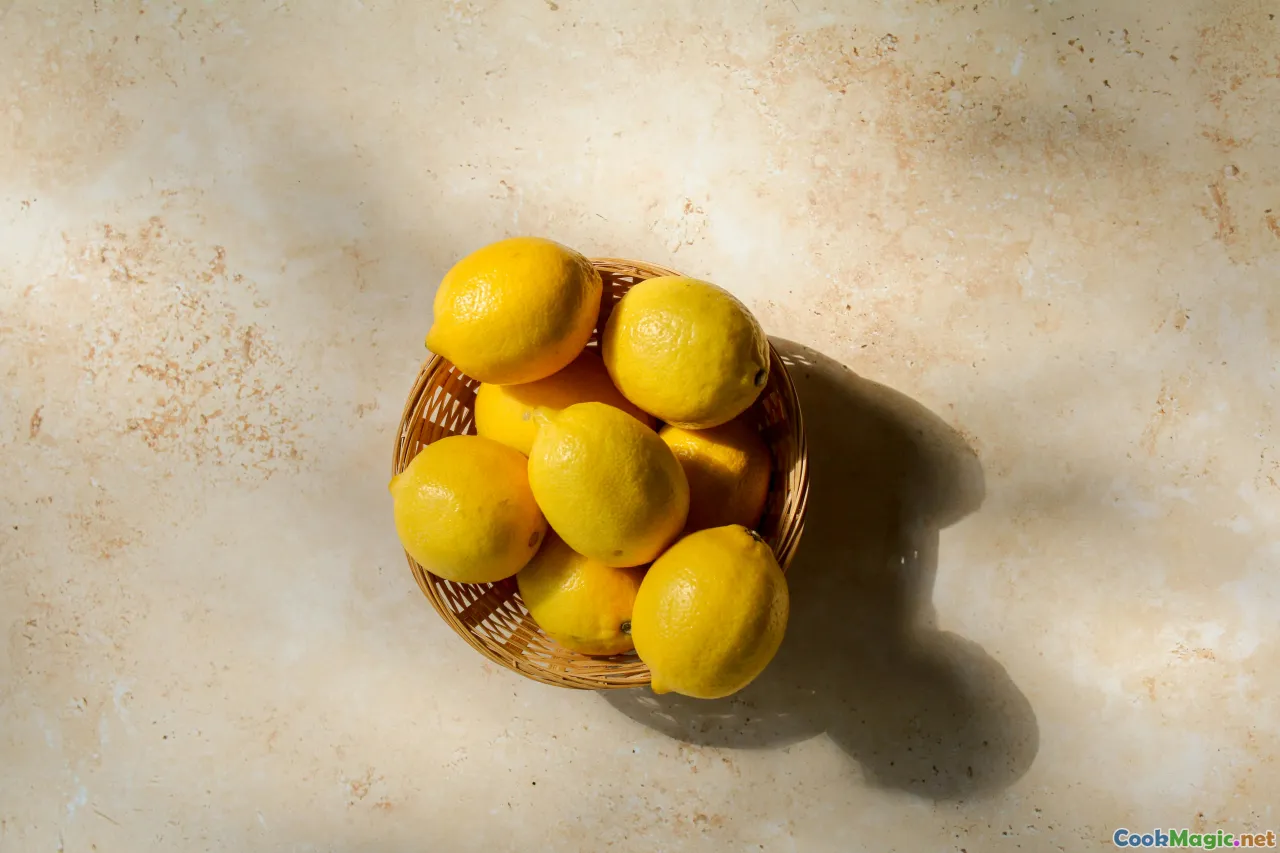
如果你黎明时抵达斯里兰卡——时差尚未平复,海风吹拂的眼睛带着咸味——你很可能不会收到以肉为豪的盛宴款待,而是一盘与你所见风景相类的料理:绿色、椰香四溢、火气温和、散发着叶子与树皮的香气。 一只藤编托盘出现。托盘上,一圈松软的线状圆片蒸气升腾,洁白如清晨的薄雾,旁边是一滩金色的椰奶咖喱,另外还散落着一抹粗犷而热情的 pol sambol(pol sambol),混入生椰与辣椒,鲜明得足以让困倦的味蕾顿时振聋发聩。你试了一口。椰子清凉而甜美,青柠的挤汁如阳光一瞬间洒下,辣椒在舌尖歌唱,胡芫荽籽在咖喱中低声咕哝。它完全是素食的,也完全是斯里兰卡的风味。
Vegetarian food here isn’t an afterthought or a sanctimonious add-on. It is the heart, the everyday rhythm, tied to harvests and temple rituals, to backyard jackfruit trees, to the unbroken pounding of a grinding stone. To eat vegetarian in Sri Lanka is to taste the country’s logic: a cuisine engineered by coconut, shaped by spice, and balanced in that delicate Sri Lankan way where heat, sour, and sweet weave into each other like batik.
The Island’s Vegetarian Heartbeat

Walk a morning market in Pettah or Kandy and you see the vegetarian heartbeat laid bare: pyramids of drumsticks (moringa pods), bundles of gotu kola and mukunuwenna greens tied with raffia, eggplants long as a child’s forearm, snake gourd curling like punctuation, and jackfruit—a pebbled, prehistoric presence—oozing white latex at the cut. The stalls smell of wet leaves, the coppery tang of turmeric, and coconut milk’s faint sweetness cooling the air.
Sri Lanka’s vegetarian center of gravity has deep roots. Buddhist monastic traditions nudged home cooks toward meatless generosity, Tamil Saivite practices cultivated temple dishes built on legumes and milk, and the abundance of coconut made dairy optional even before plant-based was a phrase. Colonial entanglements brought new spices and tastes—chiles, for one—but the island shaped them in its own image: spice not as bludgeon, but as architecture.
Vegetarian food thrums through daily life: rice and curry meals layered with dals and mallungs; porch breakfasts of string hoppers and kiri hodi; kenda (herbal porridge) sweetened with a lick of kithul treacle; temple pongal rich with ghee and cardamom; pittu steamed in metal cylinders and sluiced with coconut milk. There is no feeling of lack. Instead, there’s the sense that vegetables, grains, and coconut are the default, with meat—if it appears at all—just another variation.
Breakfast on the Veranda: String Hoppers, Kiri Hodi, and Sambols
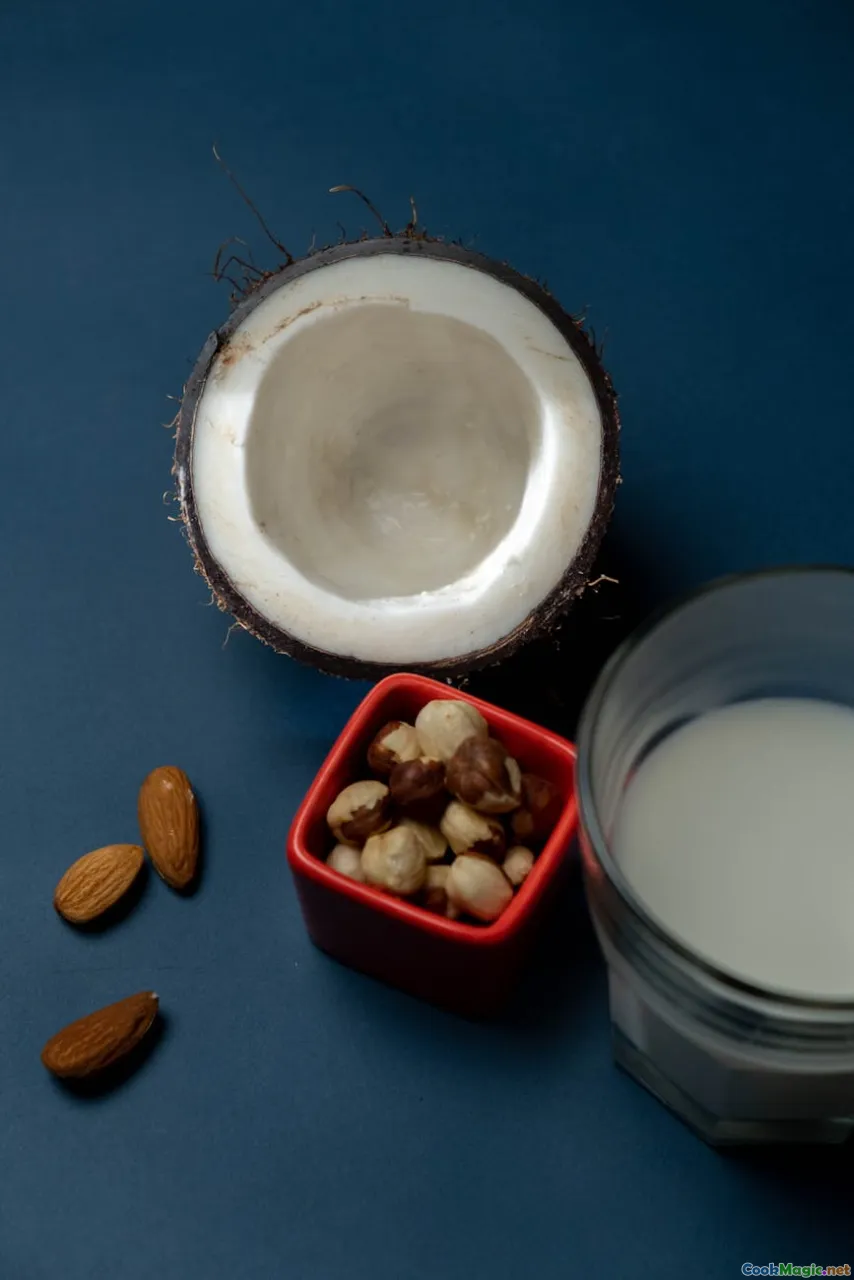
My first Sri Lankan breakfast was in a Kandy guesthouse with a view of hills stepped in tea. The veranda still smelled of last night’s rain—the petrichor carrying green spice like a rumor. An auntie pressed a brass idiyappam mold, turning rice flour dough into threads that coalesced into neat nests: string hoppers. They steamed under a cloth, glistening like lace when unveiled. Alongside, she ladled kiri hodi—coconut milk gravy the color of marigolds—from a clay pot. It sighed of fenugreek, pandan (rampe), curry leaves, and the citrusy lift of a final minute’s squeeze of lime.
The plate worked like geometry. The hoppers provided soft, absorbent surface; the gravy pooled and coated; and the sambols exploded: pol sambol in riotous orange with grated coconut and red chile; gotu kola sambol shredded like confetti, green and herbaceous, cool as a creek; a tart tomato sambol that tasted like the sun decided to become a chutney.
How-to (at home):
- String hoppers: Mix roasted rice flour with lukewarm salted water until you can pinch it and it keeps shape but doesn’t crack. Press through an idiyappam mold onto perforated trays (or steamer lined with banana leaf) in spiral rounds. Steam 5–7 minutes, until springy.
- Kiri hodi: Bloom mustard seeds and fenugreek in a spoonful of coconut oil. Add sliced shallots, curry leaves, a bruised green chile, a piece of pandan, and a whisper of turmeric. Stir in thin coconut milk (second press) and simmer until the fenugreek seeds turn tender and perfumed. Finish with thick coconut milk (first press), remove from the heat before it boils, and brighten with lime.
- Pol sambol: Pound dried red chiles and salt to a paste on a miris gala (grinding stone) or pulse in a mortar. Work in grated coconut, minced shallot, and a squeeze of lime. Taste for sun and fire. Many cooks add Maldive fish for umami; keep it vegetarian by toasting a handful of coconut until nutty and blending it in.
There is a smell that becomes the smell of Sri Lankan morning: coconut steaming, curry leaf releasing foresty camphor in hot oil, rice warming. It sticks to memory.
The Jackfruit Trilogy: Polos, Kos, and Seeds
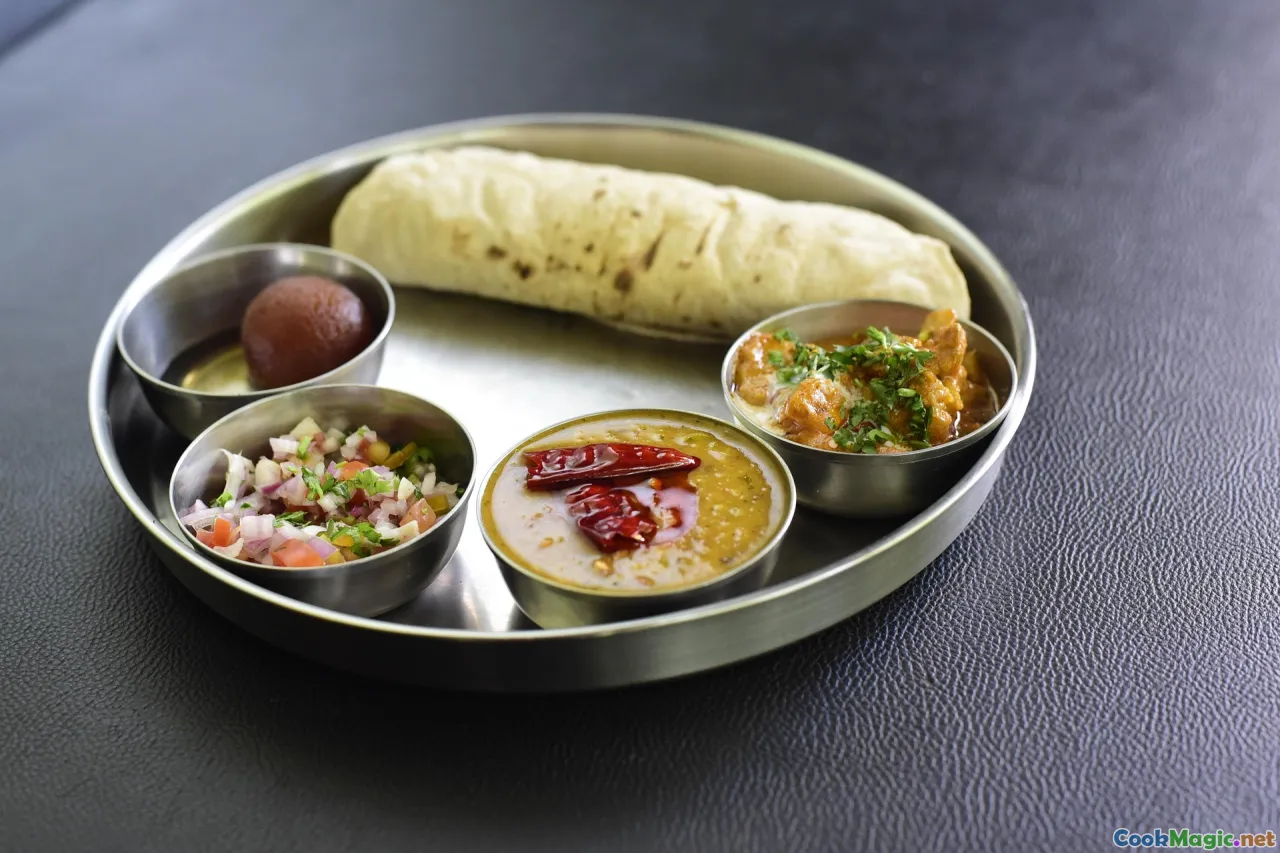
The jackfruit tree is a Sri Lankan pantry by itself. Young fruit—polos—cooks into a curry with the tender bite of brisket, starbursting with roasted spice. Mature fruit—kos—turns mellow, softly sweet, generous enough to feed a crowd. Even the seeds—the glossy marbles that tumble out when you break apart the ripe fruit—become a curry with a milky, chestnut-ish dignity.
Polos is a rite of passage. If you buy it whole, the latex will string like cobwebs from the cut; smear your knife with coconut oil first and keep a bowl handy. Each cube gets massaged with badapu thuna paha (roasted curry powder), salt, and a smear of goraka—black tamarind that smells like a forest floor after rain, tasting sour with a bass note of smoke. Then in a clay pot go fat mustard seeds, a cinnamon quill, green chile, onion, garlic, ginger, curry leaves, pandan, and a scant river of thin coconut milk. The simmer runs low and patient. Your kitchen fills with the fragrance of old wood and fresh leaf, the polos fibers surrendering from pale green to tawny brown. When the pieces yield to a spoon but still stand up straight, in goes thick coconut milk, flicked through with pepper and coriander’s lemony echo.
Kos (mature jackfruit) is more velvet than muscle, best when cooked simply: turmeric, coconut milk, a little jeera (cumin), a gentle hand. The seeds—after being boiled and skinned—get their own treatment: sauté with mustard seeds, curry leaves, a little goraka or tamarind for tartness, and coconut milk. You get textures and flavors that change with the fruit’s age: the same tree teaching different lessons.
Small recipe sketch: Polos Curry
- Prepare: Oil your knife. Cut the young jackfruit, discard the rind’s prickled outer shell, cube the firm interior. Toss with 2 teaspoons roasted curry powder, 1 teaspoon salt, and 2 teaspoons goraka paste (or tamarind if needed).
- Temper: Heat coconut oil in a clay pot. Add mustard seeds until they pop, then 1 cinnamon stick, a handful of curry leaves, 1 piece pandan, sliced shallots, minced garlic and ginger. Stir until glossy and aromatic.
- Simmer: Add the polos, a cup of thin coconut milk, 1–2 split green chiles. Cover and cook on low until tender, about 45–60 minutes, adding more liquid if needed.
- Finish: Stir in 1 cup thick coconut milk and a pinch of ground pepper. Warm without boiling, rest 10 minutes, and serve.
It tastes like patience rewarded: spicy, faintly smoky, with an almost meaty pull. It’s the curry that persuades carnivores, but really it’s a love letter to a tree.
The Everyday Plate: Rice and Curry, Leafy Mallungs, and Parippu

A Sri Lankan vegetarian plate is a color wheel. Red samba rice or nutty, slightly chewy red kakulu rice forms the bed. Parippu—red lentils simmered soft and kissed with coconut milk—spills sunshine next to it. A mallung of greens brightens the corner, flecked with white coconut like sea-foam on rocks. Then a vegetable curry—maybe wattakka (pumpkin), beetroot, or okra (bandakka)—shines in turmeric gold or ruby gloss. There is often a pickle: wambatu moju, sweet-sour eggplant as glossy as lacquer, or a spoon of lunu miris, fiery onion relish.
Leafy mallungs are simplicity itself and teach Sri Lanka’s talent for restraint. Gotu kola, mukunuwenna, or kathurumurunga leaves are sliced very thin, almost like tea. A handful of coconut, chopped shallot, green chile, a pinch of turmeric, salt, and lime: tossed barely warm or stir-fried for a few breaths. The greens stay bright. You taste chlorophyll in its Sunday best.
Parippu is solace, silk, and sweetness from coconut. The lentils break down into a quiet, spoon-coating stew. Fenugreek seeds add a faint maple whisper. Sometimes it is scented with a shard of cinnamon, or pierced by a dried red chile blistering in the oil. Often, it’s finished with a final bloom of spices—the Sri Lankan tempering technique that’s less garnish than conversation.
How-to: Everyday Parippu
- Rinse 1 cup masoor dal (red lentils) until the water runs clear. Simmer with 1/4 teaspoon turmeric, 1 small bruised green chile, a piece of pandan, a few curry leaves, and enough water to cover by two inches. Cook until tender but not mushy, about 12–15 minutes.
- Stir in 1/2–3/4 cup thin coconut milk and simmer gently another 5 minutes. Salt to taste.
- Temper in a small pan: heat 1 tablespoon coconut oil, pop 1/2 teaspoon mustard seeds, add 1/2 teaspoon cumin seeds, 1 dried red chile, a handful of curry leaves, and sliced shallots. Cook until the edges brown. Slide this sizzling aromatic oil into the dal. Stir and finish with a splash of thick coconut milk if you like it richer.
Pumpkin curry smells like afternoon sun. Beetroot curry is jewel-toned and slightly earthy-sweet, especially when finished with coconut and a breath of vinegar for lift. Okra, quickly sautéed with mustard seeds and coconut, stays crisp at the edges, tender at the seeds. Each dish seems designed to make rice taste new again.
Temple Food and Tamil Vegetarian Traditions

In the north, around Jaffna’s kovils, you can hear vegetarian food in the ritual cadence of prayer and cooking. The steam from a pongal pot is ceremonial as much as culinary, the first spillover of milk hailed as a sign that abundance will overflow the year. Ven pongal—savory, made with raw rice and moong dal—carries ghee’s perfume and the nutty pop of black peppercorns. Sakkarai pongal, its sweet counterpart, is rich with jaggery, cardamom, and cashews, a hymn you can eat with your hands.
Temple offerings often include sundal—chickpeas or black-eyed peas tempered with mustard seeds, coconut, and curry leaves—served as prasadam to devotees. It is warm in the palm and smells of toasted mustard and curry leaf, humble and deeply satisfying.
Tamil vegetarian traditions in Sri Lanka share a dialect with South India but speak it in an island accent. The sambar might be leaner, the rasam sharper and more citrus-forward, and the poriyals dance with coconut rather than asafoetida. Jaffna cooks use palmyrah products and odiyal flour in ways unique to the peninsula. Idiyappam (string hoppers) with coconut-milk gravies feel like a bridge between the two worlds: rice and coconut doing their old duet, with fenugreek carrying the tune.
If you visit during Thai Pongal, join a household at dawn. Watch the wood fire catch, smell the first bubble of milk foam, hear the cheer when it spills over, and taste warm pongal on a banana leaf blade. Vegetarian cuisine isn’t just a diet here; it is a seasonal calendar and a social contract.
The Art of Tempering: A Technique That Builds Sri Lankan Umami

Tempering is the island’s secret handshake. Sri Lankans call it tapping the dish awake: you heat coconut oil until it listens, pop mustard seeds so they chatter, toast cumin or fennel for sweetness, then drown a handful of curry leaves and a ribbon of pandan in the fat so they release perfume as vivid as green ink. Shallots brown at the edges. A dried red chile blisters and sighs smoke. This sizzling chorus, poured at the end over dal or a mild curry, changes the dish’s backbone.
For vegetarian umami, tempering is a gift. Toasting coconut until it’s the color of tea and incorporating it into a temper makes a sambol more bass-rich. Slowly caramelized shallots add sweetness as thick as a stringed instrument’s hum. A few fenugreek seeds gently bitter the edges, making sweetness feel deeper. Without Maldive fish, you can add umami by using roasted curry powder generously, or slipping in a crushed piece of dried shiitake into a simmering pot for a quiet subterranean note, then fishing it out before serving.
Tip: Always let the oil take on the scent of curry leaves and pandan for at least 30 seconds before moving on. That’s when the kitchen smells like Sri Lanka.
Sour, Sweet, and Fire: Balance in Sri Lankan Vegetarian Dishes

If you picnick on a Sri Lankan beach with a box of rice and curry, the wind roughening your hair and the scent of cinnamon trees trickling down from the hills, you’ll taste the island’s balance. Heat is seldom isolated; it slides into lime’s flash and coconut’s plushness. Sourness comes from many places: lime most often, sure, but also from goraka—a puckered, leathery fruit that lends smoke and tartness—or from tamarind and even a dash of vinegar. Sweetness is gentle when it appears: from coconut milk, roasted vegetables, and sometimes jaggery or palm treacle.
Consider wambatu moju, eggplant pickle: the eggplant is fried until glossy and caramel-brown, then tossed with a paste of mustard, vinegar, sugar, and spices. The result is a tango of sweet and sour, sticky and silky, the heat traveling sideways rather than straight on. Beetroot curry occasionally gets a lick of vinegar to make its sweetness sparkle. Wattakka (pumpkin) is usually rounded and soft, with turmeric’s honeyed flavor repeating the vegetable’s own warmth.
Sri Lankan cooks are less interested in dominance than in conversation. The plate is a roundtable of voices: hot, sour, green, toasted, creamy, crunching each other’s sentences in a way that somehow still sounds like harmony.
Hela Bojun and the Women Who Feed the Nation
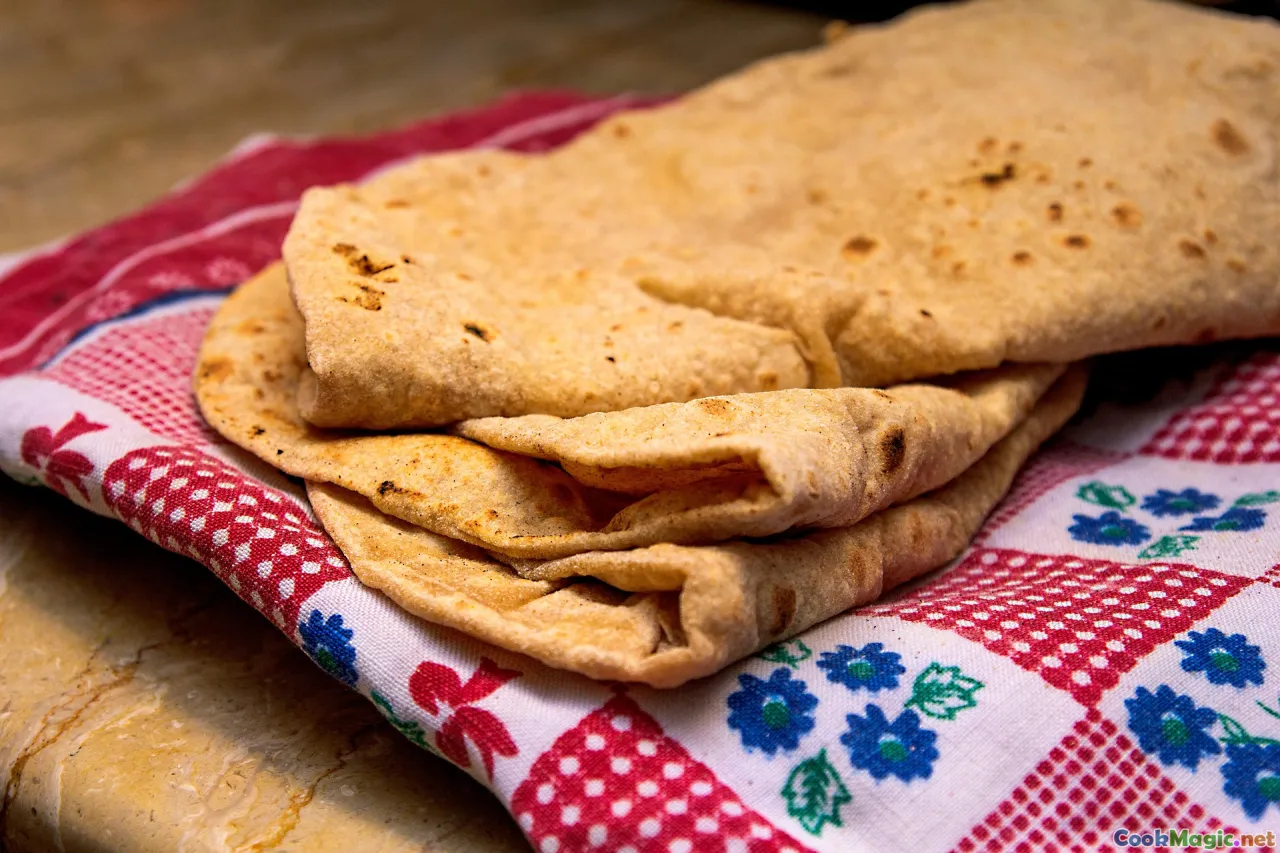
Drive the highways of the hill country or the eastern plains and you’ll spot orange-and-brown pavilions with the words Hela Bojun Hala. These are state-supported food stalls run mostly by women, selling regional snacks and meals—many of them vegetarian—made with ingredients grown just down the road. The oil smells fresh; the griddles are alive with hoppers and roti; a pot of kola kenda (herbal porridge) winks green from a corner.
On one visit outside Kandy, I watched a cook slap pol roti onto a hot plate, the coconut-studded dough perfuming the air. She served it with lunumiris, a chile-onion relish that stung in the most agreeable way, leaving behind lime’s clear chime. Next to her, a woman ladled steaming kurakkan pittu—finger millet and coconut compressed into tender grains—into a bowl with a golden splash of kiri hodi. Each bite felt like the countryside speaking: earthy, nutty, clean.
Hela Bojun stalls showcase vegetarian Sri Lankan essentials: stuffed green-chile fritters, mung dal pancakes, kola kenda made with gotu kola or moringa leaves, hoppers both plain and lacy, sweet kavum at New Year. It’s food that tastes of skill and cooperation. You will leave with your hands faintly sticky from treacle and your heart newly loyal to coconut.
Feast Days and Sweet Vegetarian Luxuries

Sinhala and Tamil New Year (Avurudu) arrives in April with the scent of new mango leaves and the smoke of hearths that are lit at astrological times. The table is a parade of sweets—many vegetarian—whose textures alone are a tour of the island: kavum (oil cakes) fried until their edges pucker into golden bubbles; kokis, delicate latticed cookies made from rice flour and coconut milk, deep-fried until they ring brittle under the tooth; mung kavum, green gram sweet squares; aggala, roasted rice balls sweetened with kithul treacle. The sound of frying is part of the festival’s music.
Kiri bath, milk rice, is a more everyday luxury, but becomes ceremonial during Avurudu. Rice is cooked until the grains soften, then married with thick coconut milk and a lick of salt. Pressed into a pan and cut into diamond lozenges, it’s served with lunu miris or jaggery. The texture is sliceable, somewhere between pudding and pilaf, and it smells like coconut made solid. Buffalo curd (meekiri) with kithul treacle is another New Year staple: the curd cold and quivering, tangy as spring water, the treacle dark and smoky-sweet. Spoon and silence.
Desserts, like the savory dishes, highlight the Sri Lankan genius for coconut. Even the sweets that seem austere—aluwa, a fudgy rice flour sweet—carry coconut milk’s velvet. You finish a plate and the aftertaste is not sugar, but the echo of the palm and the idea of heat.
A Shopper’s Guide: Markets, Seasonal Greens, and Spice

To cook vegetarian Sri Lankan food well, learn what to buy and when.
- Greens: Gotu kola (Centella asiatica) tastes herbaceous and minutely bitter, perfect in sambol or kenda. Mukunuwenna (Alternanthera sessilis) is milder, great raw or sautéed. Kathurumurunga (sesbania) leaves are aromatic, wonderful in mallungs. When unsure, pinch and smell: you’re looking for leaf that smells alive.
- Vegetables: Wattakka (pumpkin) cooks into sun-colored satisfaction. Bandakka (okra) should feel firm; cook quickly to avoid sliminess. Pathola (snake gourd) is delicate and joyful with coconut. Wambatu (eggplant) should be slender for moju. Polos (young jackfruit) is a seasonal prize; oil your knife and buy from a vendor who cuts it for you.
- Coconut: Fresh grated is non-negotiable for sambols. If you’re outside Sri Lanka, unsweetened desiccated coconut can work if you sprinkle with water and steam briefly to rehydrate, then pulse for texture. For milk, aim for a two-press system: first press is thick, second press is thin. This gives you control over texture in curries.
- Spice: True Ceylon cinnamon is delicate, floral, almost citrusy—different from cassia’s brute force. Buy in quills. Curry leaves should be glossy and green. Pandan leaves, if you find them, should smell grassy and vanilla-adjacent; knot a strip to bruise and release the scent. Fenugreek imparts gentle bitterness and a maple-like aroma when handled right. Roasted curry powder (badapu thuna paha) is essential for depth; unroasted is better for lighter dishes.
Walk Pettah’s floating markets early for the best quality. In Jaffna, smaller neighborhood stalls often have the freshest greens. In Kandy, stalls near the clock tower stay lively from dawn to dusk. Bargain gently, smile often, and taste a sliver of everything the vendor offers—hospitality tastes as good as coconut does.
Recipes to Cook Tonight: Three Vegetarian Classics

- Wambatu Moju (Sweet-Sour Eggplant Relish, Vegetarian)
Ingredients:
- 500 g slender eggplants, cut into 2-inch batons
- 1 teaspoon turmeric powder
- Salt, to taste
- Coconut oil, for shallow frying
- 1 red onion, thinly sliced
- 2–3 green chiles, slit
- 1-inch cinnamon stick
- 1 teaspoon black mustard seeds
- 1 teaspoon roasted mustard powder (or grind fresh)
- 1 tablespoon sugar or jaggery, to taste
- 3 tablespoons coconut vinegar (or white wine vinegar)
- 1/2 teaspoon roasted curry powder
- 1 sprig curry leaves
Method:
- Salt and turmeric the eggplant and rest 15 minutes. Pat dry.
- Shallow-fry the batons in coconut oil until deep golden and tender; drain on paper.
- In a clean pan, warm 2 tablespoons oil. Pop mustard seeds, add cinnamon, curry leaves, onion, and green chiles; cook until onions soften but keep some bite.
- Stir in roasted mustard powder, roasted curry powder, sugar, and vinegar. Simmer 1 minute.
- Fold in eggplant gently. Adjust sweet and sour for balance—the dish should be glossy and almost jammy, with a vinegar sparkle.
- Cool and rest at least an hour. Keeps well for days.
- Pol Roti with Lunumiris (Coconut Flatbreads with Onion-Chile Relish)
Pol Roti Ingredients:
- 2 cups all-purpose flour (or 1 1/2 cups flour + 1/2 cup atta)
- 1 cup freshly grated coconut
- 1 small onion, finely chopped
- 1 green chile, minced
- 1 teaspoon salt
- Water, as needed (about 1/2 cup)
- Coconut oil, for cooking
Lunumiris (Vegetarian) Ingredients:
- 1 small red onion, very finely chopped
- 1–2 teaspoons red chile flakes (or ground dried red chile)
- 1/2 teaspoon salt
- Juice of 1/2 lime
- Optional vegetarian umami: 1 tablespoon toasted desiccated coconut, very finely ground
Method:
- Mix roti ingredients, adding water gradually until you have a soft, non-sticky dough. Rest 15 minutes.
- Divide into balls, flatten into thick discs, and cook on a hot griddle with a brush of coconut oil until mottled golden on both sides and cooked through.
- For lunumiris, pound onion, chile, and salt to a coarse paste; finish with lime. Stir in the toasted coconut if skipping Maldive fish.
- Eat hot, tearing with fingers, swiping through the relish. The roti should be gently crisp outside, steamed-soft within, and audibly coconutty.
- Beetroot Curry with Coconut
Ingredients:
- 4 medium beets, peeled and julienned
- 1 small red onion, sliced
- 2 cloves garlic, minced
- 1 green chile, slit
- 1 sprig curry leaves
- 1 piece pandan (optional)
- 1/2 teaspoon mustard seeds
- 1/2 teaspoon cumin seeds
- 1/4 teaspoon turmeric powder
- 1 teaspoon roasted curry powder
- 1 cup thin coconut milk + 1/2 cup thick coconut milk
- 1 teaspoon vinegar (optional, to brighten)
- Salt, to taste
- Coconut oil
Method:
- Warm coconut oil. Pop mustard seeds, toast cumin, add curry leaves and pandan until fragrant.
- Add onion, garlic, and green chile; sauté until onion softens.
- Stir in beets, turmeric, roasted curry powder, and salt. Toss to coat.
- Pour in thin coconut milk. Cover and simmer until the beets are tender but retain a little snap, 10–12 minutes.
- Stir in thick coconut milk and a teaspoon of vinegar if you want the sweetness to sparkle. Heat gently without boiling. Serve with red rice and parippu.
Building a Vegetarian Sri Lankan Pantry

- Coconut triad: Fresh grated coconut; coconut milk (or cream); coconut oil. Learn to extract thick and thin milk.
- Rice: Red samba or kakulu for everyday heft; white nadu for softer texture; kurakkan (finger millet) flour for pittu and roti.
- Spice base: True cinnamon quills; mustard seeds; fenugreek; cumin and coriander seeds; fennel seeds; green and dried red chiles; black pepper; cardamom; cloves; turmeric; roasted and unroasted curry powders.
- Aromatics: Curry leaves (fresh or frozen); pandan leaves; lemongrass (sera) for some light curries.
- Souring agents: Goraka (gombo) paste; tamarind; limes; coconut vinegar.
- Legumes: Red lentils (masoor); moong dal; chickpeas; cowpeas (karamani/awara).
- Vegetables: Dried shiitake for vegetarian umami; jackfruit (canned young jackfruit if fresh isn’t available); eggplant; pumpkin; okra; beets; snake gourd if you can find it; moringa pods.
- Sweeteners: Kithul treacle and jaggery.
Tips:
- Roast your own curry powder for depth: coriander-heavy, with cumin, fennel, cinnamon, cloves, black pepper, and a little toasted rice for body. Each family has a ratio; find yours.
- Store curry leaves and pandan in the freezer sealed tight; they release fragrance well even after freezing.
- If goraka is hard to find, tamarind plus a whisper of smoked tea can approximate its sour-smoky profile for specific dishes like polos.
Where to Eat: My Favorite Vegetarian Bites Across Sri Lanka
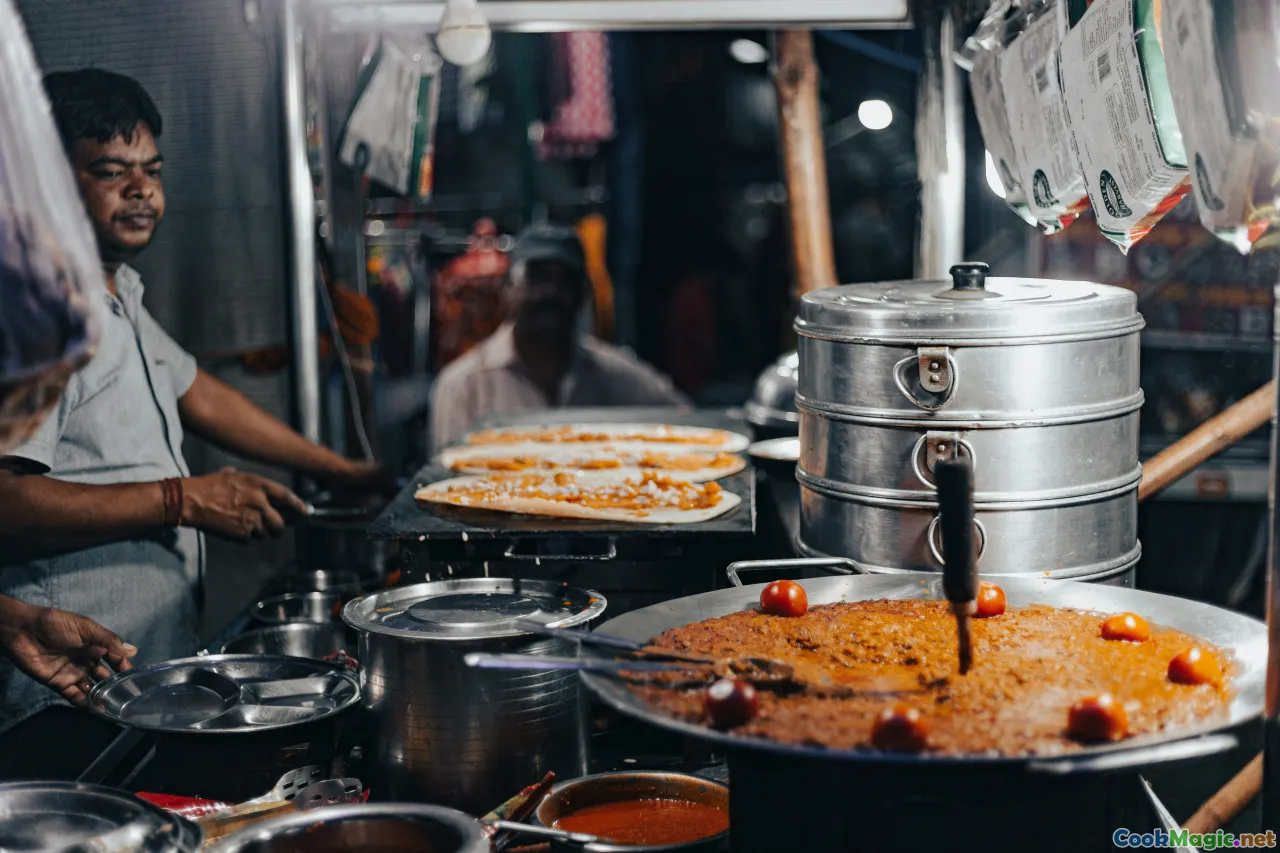
- Colombo: Shanmugas in Wellawatte is a temple of vegetarian Tamil dishes—pongal at breakfast, crisp dosai at dinner. Sri Vihar in Bambalapitiya plates comforting thalis with sambar that tastes of home kitchens. Upali’s near Town Hall offers polished versions of rice and curry with excellent pumpkin curry and gotu kola sambol.
- Kandy: The Hela Bojun stall near Peradeniya does an honest kurakkan pittu and herbal kenda in the morning; Gemi Gedara’s midday buffet (check hours) often includes multiple vegetarian curries with red rice.
- Jaffna: Mangos Restaurant serves all-vegetarian fare, with idiyappam and sodhi (a delicate coconut milk stew) that feels like silk. Nearby kovils sometimes distribute sundal as prasadam—accept it with both hands.
- Galle: Lucky Fort Restaurant inside the fort is known for a ten-curry rice-and-curry set; request all-vegetarian—you’ll likely get a parade of beetroot, jackfruit, pumpkin, dal, and greens.
- Hill Country: Roadside tea shops will serve string hoppers in the morning with kiri hodi; ask for pol sambol without Maldive fish if you prefer purely vegetarian.
- Mirissa and Ella: Dewmini Roti Shop in Mirissa is famous for stuffed rotis; the vegetable-and-cheese is a beach-town indulgence. In Ella, small family spots like Matey Hut simmer humble, lovely dal and pumpkin curries.
Everywhere, ask with kindness and clarity; most cooks are delighted to make vegetarian adjustments. The default kindness in Sri Lankan hospitality tastes like coconut milk poured with a smile.
Comparison: Sri Lankan Vegetarian vs. South Indian and Southeast Asian Plates

Sri Lanka shares rice, dal, and coconut DNA with South India, but it writes a different poem. Where many South Indian sambar are tamarind-forward, Sri Lankan vegetable curries often use coconut milk for body and roasted curry powder for depth. Sri Lankan parippu is richer with coconut and softened by fenugreek; dosai culture is robust in the north but less dominant elsewhere, with string hoppers and hoppers taking the stage.
Compared to Thai vegetarian dishes, Sri Lankan cuisine leans more on cinnamon and pepper than on galangal and fish sauce (or their substitutes), and on a roasted-spice foundation rather than high aromatics and sweetness. The sourness of goraka feels woodsy compared to tamarind’s bright puckering. The heat profile favors small green chiles and the slow, persistent warmth of dried red ones.
And then there’s the singular presence of pandan and curry leaves together: the duet that makes many Sri Lankan dishes smell like a green room in a temple. It’s an aroma and flavor that belongs specifically to the island.
Memory, Technique, and the Miris Gala

Older kitchens keep a miris gala, the grinding stone worn satin-smooth where hands have courted it for decades. Pounding chile and salt to a luminous paste, grinding roasted spices into a fragrant fog—these acts make vegetarian Sri Lankan food as much as ingredients do. You don’t need a stone—mortars, spice grinders, and blenders do honorable work—but there’s something in the physicality that seems to draw out flavor.
Another technique worth adopting is the two-stage coconut milk addition: simmer with thin milk to soften ingredients, finish with thick to preserve coconut’s sweetness and avoid curdling. Likewise, use heat wisely with fenugreek; too high for too long and its gentle bitterness becomes a roar. Warmth and patience are better than brute intensity.
Finally, the resting ritual: many curries—polos, moju, even dal—taste better an hour later or next day, when the spices’ edges soften and their conversation relaxes. Vegetarian dishes, freed from the volatility of meat, often deepen without turning muddy. It’s like a tea that’s allowed to bloom.
Troubleshooting and Tips from Sri Lankan Home Cooks
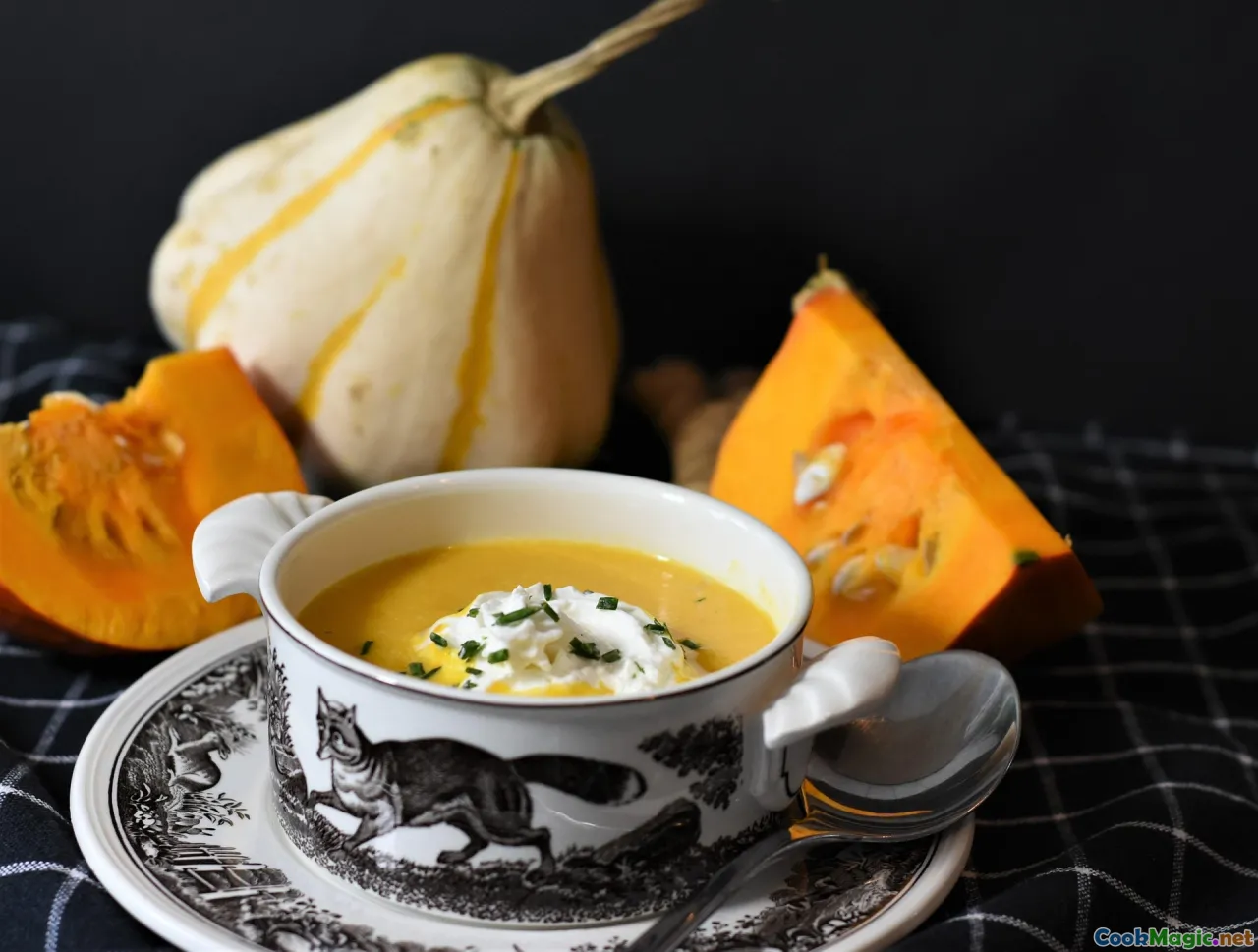
- My coconut milk split! Keep the heat gentle after adding thick coconut milk. Remove from the heat just as it shivers; boiling is the enemy of cohesion.
- My okra turned slimy: Cook hot and fast with enough oil to coat, and introduce acid (a dash of lime or vinegar) at the end to tighten textures.
- My sambol tastes flat: Salt more assertively and use a very fresh lime; try toasting a portion of the coconut for bass notes.
- I miss Maldive fish umami: Roast curry powder darker, caramelize onions slowly, and drop in a piece of dried mushroom for the simmer. A pinch of soy sauce is a modern hack, but wield it with restraint.
- My mallung is dull: Slice greens very thin; toss just until warmed. Lime at the end is the difference between grass and song.
A Short Love Letter to Red Rice

Red sambas and kakulu rices belong on every vegetarian Sri Lankan table. Their taste is slightly nutty, their bite pleasantly resilient, and they love coconut curries with a loyalty that white rice can only approximate. Rinse lightly, soak 20 minutes, and steam or boil until each grain stands apart yet willing to cuddle in a spoon. The color alone—rust-red turned brick when cooked—feels like sunset on a plate. Paired with parippu, it’s the edible version of a hammock.
Bringing It Home: Cooking with Memory and Coconut

The vegetarian core of Sri Lankan cuisine isn’t just a palette of ingredients; it’s a memory device. The taste of curry leaves crackling is the taste of a doorway opening and someone saying, Come in, come in. The weight of a banana leaf plate, warm on your lap, is the weight of belonging.
You can cook this way wherever you are. Buy a handful of curry leaves, stash pandan in the freezer, and treat coconut milk like both broth and cream. Grind a roasted curry powder that smells like your own house and use it to anoint jackfruit and pumpkin. Teach your knives to move through greens like rain through palms. Temper at the end, always listening for the seeds’ pop and the leaves’ sigh.
Invite people over. Spoon dal and beetroot curry beside red rice, drop pol roti stacked in a kitchen towel at the table, tear and share. Put out pickles and sambols like small, shining gifts. If someone says they miss meat, offer them a spoon of polos with that smoky-sour depth, and watch their eyebrows rise.
Sri Lanka’s vegetarian dishes are not compromises. They are confidence itself, born of a landscape that knows how to make a feast from trees and leaves and sunlight. When I think of the island now, I don’t first remember beaches or trains racing along cliff edges—though I loved both. I remember a veranda, a plate fogging in morning cool, and the first bite of pol sambol, lightning and coconut and lime. That taste lives rent-free, a compass pointing toward kitchens where vegetables are enough, because here, vegetables are everything.









